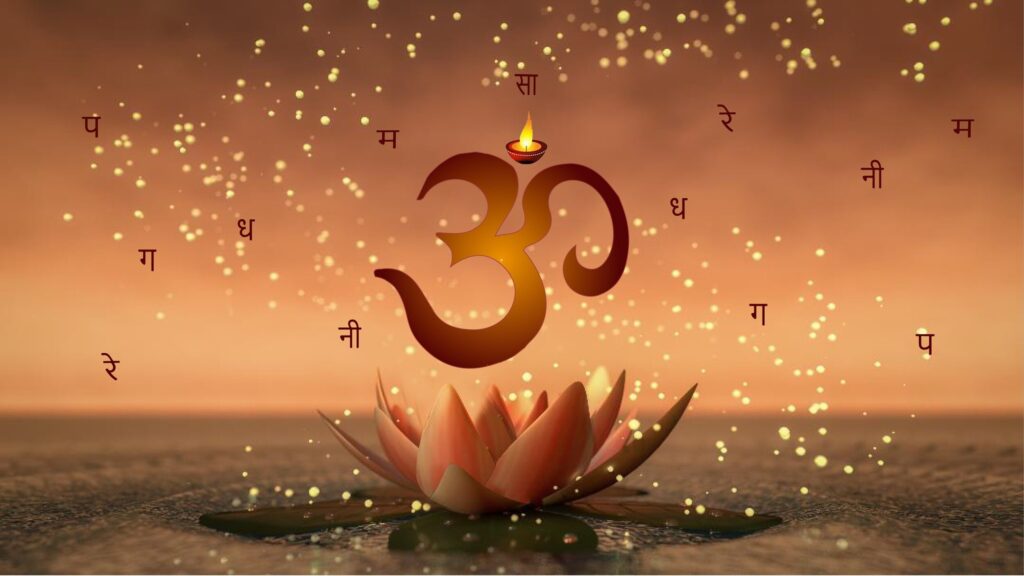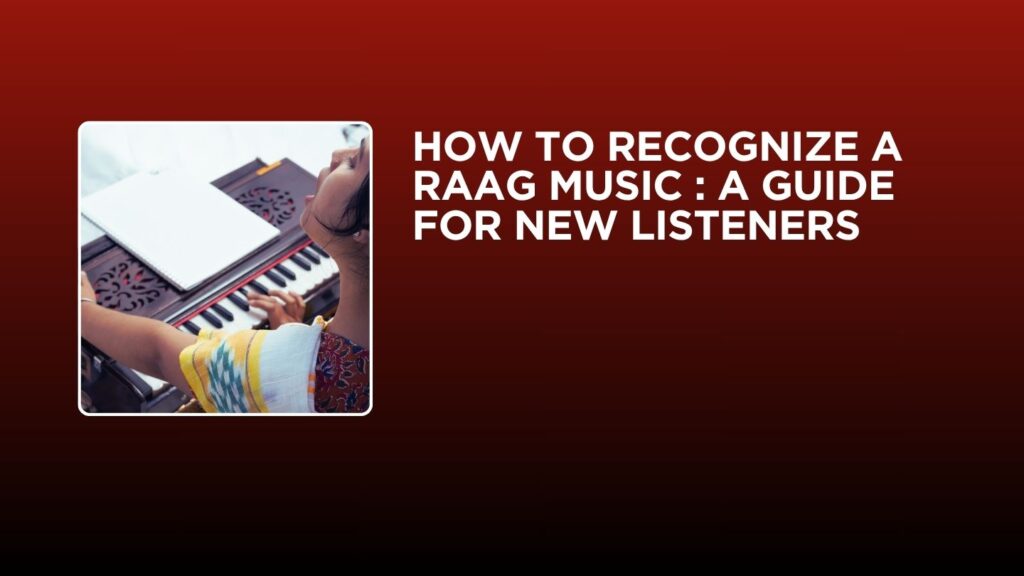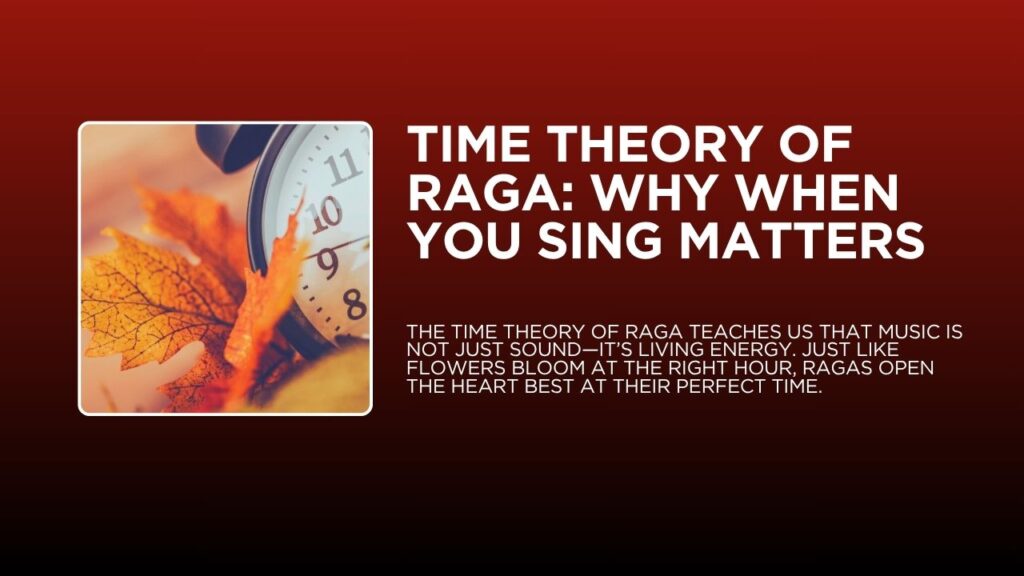
Understanding and recognizing a Raag (or Raga) is one of the most foundational step in the classical music genre. To a new listener, the ragas may feel mysterious and advanced form of melodies, moods, and movements. However, with careful listening, guidance, and a little patience, anyone can begin to decode the unique signature of each raag. This guide offers a holistic overview, including the wisdom of legendary ustaads, the approach for beginners, and the role of ragas in the broader context of Indian classical music.
Raag music holds the essence of music that is to be learnt. Understanding and recognizing the raga in the begineer level helps you to get the foundation also called base in the future. The saadhana of the raags will ultimately provides you to the better journey as a classical musician.
What Is a Raag?
A raag is more than just a scale; it is a melodic framework (different combination of the swars)that evokes specific emotions (rasa) and is tied to specific times of the day, seasons, or even spiritual states. Unlike Western scales, a raag is not a fixed progression but a living, evolving entity that unfolds over time.
Each raag has:
- A distinct set of notes (swaras) or the different combination of the notes that are used.
- A specific mood or emotional flavor
- A characteristic ascending (aaroh) and descending (avroh) pattern
- Important notes called vadi (dominant) and samvadi (sub-dominant)
- The time specification on the basis of prahars.
- Unique phrases and ornamentations that define its identity. Also called the Raagdari.
- Use of the ornamentation like Meeds, Gamaks, Khitka, Murki, Taans, Layakari etc.
Sayings and Wisdom of the Ustaads
- Ustad Vilayat Khan once said, “A raag is like a person you get to know. At first, you meet the outer personality. Slowly, with love and attention, you begin to know its soul.”
- This metaphor reminds students to treat ragas with respect and curiosity approach them with patience, and they will reveal themselves.
- Pandit Bhimsen Joshi emphasized: “It’s not about the number of notes you sing, it’s about how you make them speak.”
- He pointed to the idea that the bhaav (emotion) and intention behind each note are what distinguish a raag performance from mere melodic playing.
- Ustad Amir Khan believed in the introspective, meditative aspect of raags, stating, “The raag is a prayer. If you do not surrender to it, it won’t open up to you.”
- Ustaad Zakir Hussain said “You don’t just play music; you converse with it. And a raga is one of the most profound conversations you can have.”
- Pt. Hariprasad Chaurasiya said“A raag is not just notes. It’s the silence between the notes, the bends, the pauses, the longing.”
Chaurasia ji draws attention to the subtle nuances meend (glides), gamak (oscillations), kan swar (grace notes) that define a raag. Recognizing these details is essential for deeper identification beyond the scale
How to Recognize a Raag: Step-by-Step Guide for Beginners
- Learn the Basic Structure (Aaroh and Avroh):
Start by understanding the ascending and descending movements of the raag. This is your skeletal guide.Understanding the basic swor works from aroh and avoroah helps youi to find the melody of the ragas also the combination of the swars. The repeated practice of those swars and its flavour of raga gives you the understanding or Recognization of the raga. - Listen Repetitively:
Choose 2–3 versions of the same raag sung by different artists. Repetitive listening helps your brain absorb the phrases and patterns that make each raag unique. The artist or the musician needs the good ear to accomplish the music. The repeated listening of the ragas help you to settle the notes sub consciously. When you are in the practicing mode. The mind recalls you whaterver you listen . So listening to great other artist is the best way of recognizing the raga. - Focus on the Pakkad (Signature Phrase):
Every raag has a pakkad, a characteristic melodic phrase that acts like a fingerprint. Pakaad of every raga is the foundation of the raga itself. Every pakaad of the raga gives the main swor phrases or combination of that raga. For example, the pakkad of Raag Yaman is: N R G M P M G R S . - Note the Mood and Time:
Each raag carries a mood. Raag Bhairav feels devotional and serious, while Raag Desh is romantic and patriotic. Also, some ragas are meant to be performed at specific times of day (e.g., Raag Bhairavi in the early morning). These timings of the raags ultimately gives you the mood of the raga and also helps in recognizing the raga. - Practice Singing or Playing:
If you’re learning an instrument or vocal, start singing simple compositions (bandish) or exercises (alankars) in the raag. This internalizes its unique nature.The more the practice you do the more you know. Playing the raag through instruments such as harmonium, keyboard as well as the flute helps you in identifying the ragas. - Use Visual Aids and Notation:
Seeing the notation (in Bhatkhande or Paluskar style) helps recognize the movement of swaras. Apps and websites like Raga Surabhi or SwarGanga are also helpful. - Compare Similar Ragas:
Listening to closely related ragas side by side like Raag Yaman vs. Raag Kalyan can help sharpen your ear to subtle distinctions. Distinguising the ragas will also develop your training in the classical music ultimately finding the more depth knowledge on the raga.
Role of the Guru and Oral Tradition
In traditional Indian classical Music (guru-shishya parampara), recognizing a raag is taught more through listening and imitation than reading. A guru may sing or play a raag repeatedly, allowing the student to absorb its essence organically. Students are often encouraged to meditate on one raag for weeks or even months before moving on.
Guru plays a vital role in helping beginners recognize and internalize a raag. Through the oral tradition, the guru imparts not just the notes but the emotion, phrasing, and character of each raag. Beginners are trained to listen deeply, absorb subtle nuances, and feel the mood of the melody rather than merely memorizing scales. The pakkad (signature phrases), vadi-samvadi (important notes), and raga lakshan (identity) are often revealed gradually. This living tradition allows learners to form a direct emotional connection with the raag, guided by the guru’s experience, expression, and intuitive insight.
Ustad Rashid Khan once said, “A guru teaches you how to feel a raag, not just sing it.” This experiential approach is what makes Indian classical music deeply immersive.
Importance of Raag in All Forms of Classical Music
- Dhrupad and Khayal:
These vocal styles heavily rely on raag purity. Dhrupad explores the raag in its most meditative, slow form, whereas Khayal allows for greater improvisation. - Instrumental Music:
Sitar, sarod, flute, violin—all instrumental performances are rooted in raags. The artist’s ability to bring out the mood of the raag through their alaap (introductory improvisation) and taans (fast passages) is key. - Dance:
In Bharatanatyam, Kathak, and Odissi, the music accompanying dance often follows raag structures. The emotional tone of the dance is tied to the raag being played. - Bhajans and Devotional Music:
Many devotional songs are set in classical ragas. Raag Bhairav, Raag Yaman, Raag Bhimpalasi, and Raag Malkauns are common in temple music. - Film and Fusion Music:
Indian cinema and contemporary fusion artists draw from raags for creating emotionally resonant songs. Examples include Bollywood songs in Raag Darbari Kanada or Raag Pahadi.
Conclusion
Recognizing a raag is like learning a new language one where each syllable is a note and every sentence is an emotional journey. With persistent listening, deep respect for the tradition, and guidance from seasoned musicians, any listener can train their ears and soul to identify and cherish the beauty of ragas.
Recognizing a raag is not merely a technical skill it is a form of deep musical intuition cultivated over time through attentive listening, practice, and heartfelt connection. As Pandit Ravi Shankar expressed, “A raag is a living soul. You do not just learn it; you form a relationship with it.” This intimate relationship grows gradually, especially under the patient guidance of a guru who nurtures not just the ear, but also the inner feeling required to truly identify and express a raag.
Ustad Zakir Hussain once said, “The raga has its own life force. You don’t control it—you follow it.” This philosophy reminds students that true recognition comes from surrendering to the raga’s flow rather than approaching it as a formula.
Ultimately, the journey of raag recognition is one of humility, reverence, and discovery. Guided by the wisdom of the legends and the sacred oral tradition, students find not only musical knowledge but spiritual depth.


